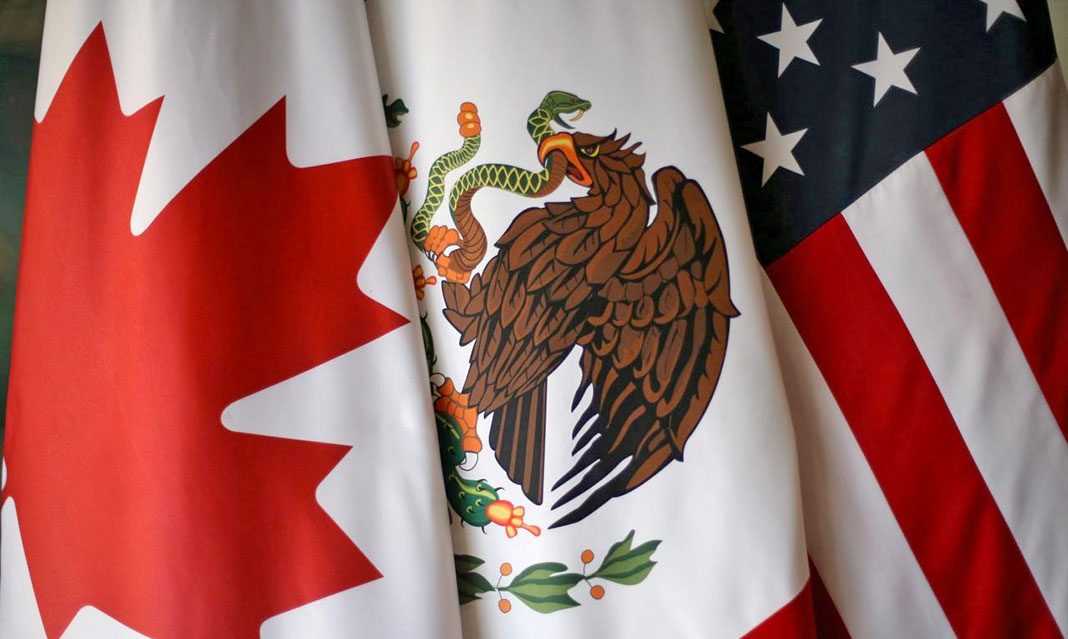The North American Free Trade Agreement may have crossed your glance when browsing through headlines or while watching the news. After President Donald Trump’s campaign promise to withdraw the U.S. from the Trans-Pacific Partnership, many of us wait to see if the administration would abide by its promise of tearing up NAFTA.
This treaty between Canada, Mexico, and the U.S., has agreed to remove trade barriers between the three countries. After its implementation in 1994, the gross domestic product for the three countries collectively reached over $20 trillion, making NAFTA the world’s largest free trade agreement. While the pros and cons of NAFTA are still heavily debated, according to an article first published on January 24th in 2017 by The Globe and Mail, titled, “NAFTA, Trump and Canada: A guide to the trade file and what it could mean for you,” output from the agreement’s trade allowances remains greater than the economic output of the 28 countries in the entire European Union.
With the NAFTA implemented, tariffs on imports and exports between the three countries can be eliminated. Tariffs are taxes used to make foreign goods more expensive.The detailed 2000-page of the agreement document specifically regulates trade in farm products, automobiles, and clothing.
Chapter 52 within the document also protects businesses from unfair practices. By doing so, any disputes are resolved swiftly which helps all parties avoid hefty lawsuits. Other agreements within NAFTA include allowing business travelers easy access throughout Canada, the U.S., and Mexico. The agreement has thereafter been updated to include two amendments: one to enforce environmental laws through occupation (North American Agreement on Environmental Cooperation) and the other protects working conditions (North American Agreement on Labour Cooperation).
The question is then, what does Donald Trump want NAFTA to look like and what does it mean for Canada, being the world’s largest purchaser of U.S. goods? Firstly, according to the Peter Armstrong’s analysis in the November 11, 2017 publication of The Globe and Mail, the U.S. relies less on NAFTA than Canada does.
During his campaign and then at his inauguration, Trump guaranteed an “America First” administration —introducing a climate of competitive taxes and relaxed regulations approach to trade, immigration, and foreign affairs. The Trump administration has agreed to wait until the end of March 2018 for a final deal where progress is being made through the January 2018 NAFTA talks in Montreal.
An updated version of The Globe and Mail article published on January 24, 2018 reports that the talks are presently continuing arguments over auto manufacturing and content sourcing in the NAFTA zone.
Contentious issues at the core of the disagreement threaten to destabilize the Canadian automotive industry, as Armstrong argues. The Trump administration is demanding half of the content of all North American-built autos to be produced in the United States. The government of Canada’s Prime Minister Justin Trudeau reportedly propositioned measures to boost North American production in cars and trucks, in hopes that this will get the Americans to drop their initial demand. Canadian data say putting up barriers in the automotive sector will have consequences for all three countries.
Meanwhile, Canada is also looking for other sources of trade revenue. Canadians could see a steep increase in tax-free online shopping. As Armstrong explains, however, uncertainty over NAFTA’s future has already had extensive effects on the Canadian economy, from the dollar to the energy sector.
Trump centered much of his campaign around losing U.S.’s manufacturing jobs to Mexico. This sentiment, as well as plans of building a wall along the border, have seeped into the NAFTA re-negotiations.
Another area of contention between Canada and the U.S. is the Chapter 19 debate. Chapter 19 in the NAFTA document is for trade feuds between governments. If, for example, the U.S. enforces trade duties on Canada, Canada can easily appeal to an independent panel rather than seek out reparation in the U.S.’s courts. If independent panels are scrapped, the Trudeau government has threatened to walk away from NAFTA talks.
The Royal Bank of Canada Economics Research released a report in November 2017, entitled “Life after NAFTA?” suggesting that “Roughly four per cent across-the-board increase in tariffs between Canada and the U.S. would reduce Canadian GDP growth by about one per cent over five to 10 years.” Although the report focuses on NAFTA, a 2018 report presented by the International Monetary Fund raises outlook for Canadian economy and upgrades global economic projections. According to the report, Canada’s economy is projected to grow 2.3 per cent this year, up from an estimate of 2.1 per cent in October 2017.
According to 2017 figures from Global Affairs Canada, “NAFTA has led to a three-fold increase in the amount of trade between Canada, the U.S., and Mexico.” The total trade now surpasses $1 trillion every year.



